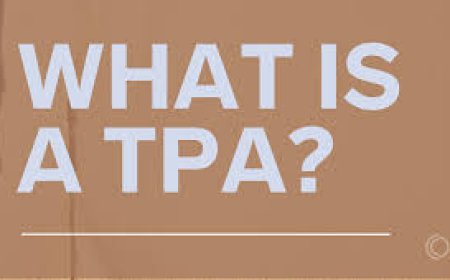The Psychology of Silent Crying: Understanding the Emotions and Science Behind Silent Tears
health
Not all pain is loud. Sometimes the deepest sorrows are expressed not through sobs, but through silent tearsthose late-night drops that roll down your cheek without a sound, unheard by anyone, yet heavy with meaning. Silent crying isnt just an emotional outlet; its a complex psychological phenomenon woven from human biology, social conditioning, and survival instincts.
? 1. Defining the Quiet Cry
-
What it is: Silent crying is the release of tears without vocalizationno sobs, no gasps, no moans. It happens in quiet moments when emotions overflow but the voice stays still.
-
When it appears: It can occur alone in bed, in the hallway between meetings, or even while pretending everythings fine.
-
Why it matters: These tears hold a storya personal narrative of pain, resilience, silence, and self-preservation.
? 2. The Emotional Root Causes
-
Emotion Suppression
-
Years of pushing emotions downdue to social expectations, fear of judgment, or internalized shameeventually catch up. Silent tears bloom when the dam breaks, quietly and fluidly.
Profound Grief or Sadness
-
There are sorrows too deep for sound. When grief saturates every nerve, sound might feel trivial. Tears become the chosen voice.
Total Emotional Fatigue
-
After crying loudly or struggling for so long, the body simply cant muster a sound. Yet the mind and heart demand releaseand the tears come alone.
Fear of Vulnerability
-
In cultures or families where crying is weak, silent tears offer a safer pathan allowance for feeling without exposure.
Moments of Inner Realization
-
Sometimes, silent tears come not out of sadness, but through shock, awe, relief, or a sudden release of pent-up emotionslike witnessing an act of unexpected kindness or reconnecting with a long-lost memory.
? 3. The Science Behind the Quiet Emotion
-
Cortisol Detox
Emotional stress floods the body with cortisol. Cryingsilent or notis natures way of flushing excess cortisol, soothing the nervous system, and helping us settle back into balance.
-
Neural Connection and Empathy
Though silent, these tears engage brain regions tied to empathy, social bonding, and internal emotional regulationareas different from those used in reflex tears (like from onion cutting).
-
Tear Chemistry
Emotional tears are unique: richer in proteins, hormones, and neurotransmitters. They dont just moisturizethey signal distress and self-care.
-
Autonomic Nervous System Role
As tears stream, the parasympathetic systema calming force in the bodyactivates. Silent crying can be a soothing auto-response, even without audible release.
? 4. Psychology & Society: Why We Cry in Silence
-
Cultural Expectations
In many societies, especially for men or high-achievers, crying is equated with fragility. Silent tears become a socially acceptable outlet.
-
Childhood Conditioning
Being told to be strong, dont cry, or stop making a fuss trains us to hide emotional expression. Over time, visible tears become taboo, but silent tears slip through.
-
Personality Dynamics
Introverts, natural caregivers, and those with strong emotional intuition often feel deeply but may censor outward expressionmaking silent crying their preferred release.
-
Trauma Adaptation
For trauma survivors, loud emotion can trigger fear or panic. Silence during crisis becomes a protective survival mechanismeven for crying.
-
Situational Contexts
There are times when silence is paramount: during work meetings, caring for others, or when we simply dont have the space to be heard. Still, feelings can spill overonly through tears.
? 5. The Benefitsand Risksof Silent Crying
Benefits (when in balance):
-
Emotional release without drawing attention
-
Hormonal reset and stress relief
-
Personal reflection and self-soothing
-
A gentle acknowledgment of internal pain
Risks (when it becomes predominant):
-
Emotional isolationyou never fully express or process feelings
-
Lingering trauma and unaddressed sadness
-
Mental health concerns like depression, anxiety, or loneliness
-
Deeper social disconnect and difficulty seeking help
?? 6. Nurturing Emotional Release
To transform silent tears into pathways of healing:
-
Awareness & Recognition
Notice the signsshallow breaths, sudden mood shifts, tingling throat. Acknowledge: This is me crying quietly, and its okay.
-
Emotional Validation
Say it to yourself: Im allowed to feel this. This pain is real. Even silent tears deserve recognition.
-
Choose Moments to Breathe
Create safe spacesbehind closed doors, in nature, with music, in artto allow both silent and loud expression.
-
Seek Connection
Share with trusted friends, family, or support groups. Letting someone know you criedeven silentlybrings relief and human connection.
-
Professional Support
Therapists, counselors, and coaches provide safe, nonjudgmental spaces to explore hidden tears and underlying pain.
-
Expressive Practices
Healing can also come through journaling, movement, art, or chanting. These can externalize that which we didnt let ourselves say aloud.
???? 7. Supporting Others in Their Silent Struggle
-
Dont wait for tears to breaknotice the quiet: a twitch, a distant stare, a sudden stillness.
-
Ask open-ended questions: Would you like to talk? or even I saw something changedhow are you feeling?
-
Offer gentle presencesometimes pulling up a chair and just sitting in silence is enough.
-
Reinforce that seeking help is a sign of self-care and strengthnot failing.
-
Respect their pace. Crying silently isnt a flawits a step toward expression, healing, and connection.
? 8. Bringing It All Together
-
Silent crying is not denialit is emotional honesty couched in quiet.
-
It bridges biology and society: a natural release shaped by upbringing and culture.
-
It is a window into deep feelinga marker of both pain and resilience.
-
Let us learn compassionnot only for the loud cries, but for the silent ones we might never fully hear.
Conclusion
Silent tears may not echo in the world, but they matter. They are whispers of pain, resilience, and longing. In honoring them, we honor https://techzemis.co.uk/and one another.
Lets cultivate a culture of emotional safety. Let us listen to quiet sorrows. And let healing flowwhether loudly or silently.


































